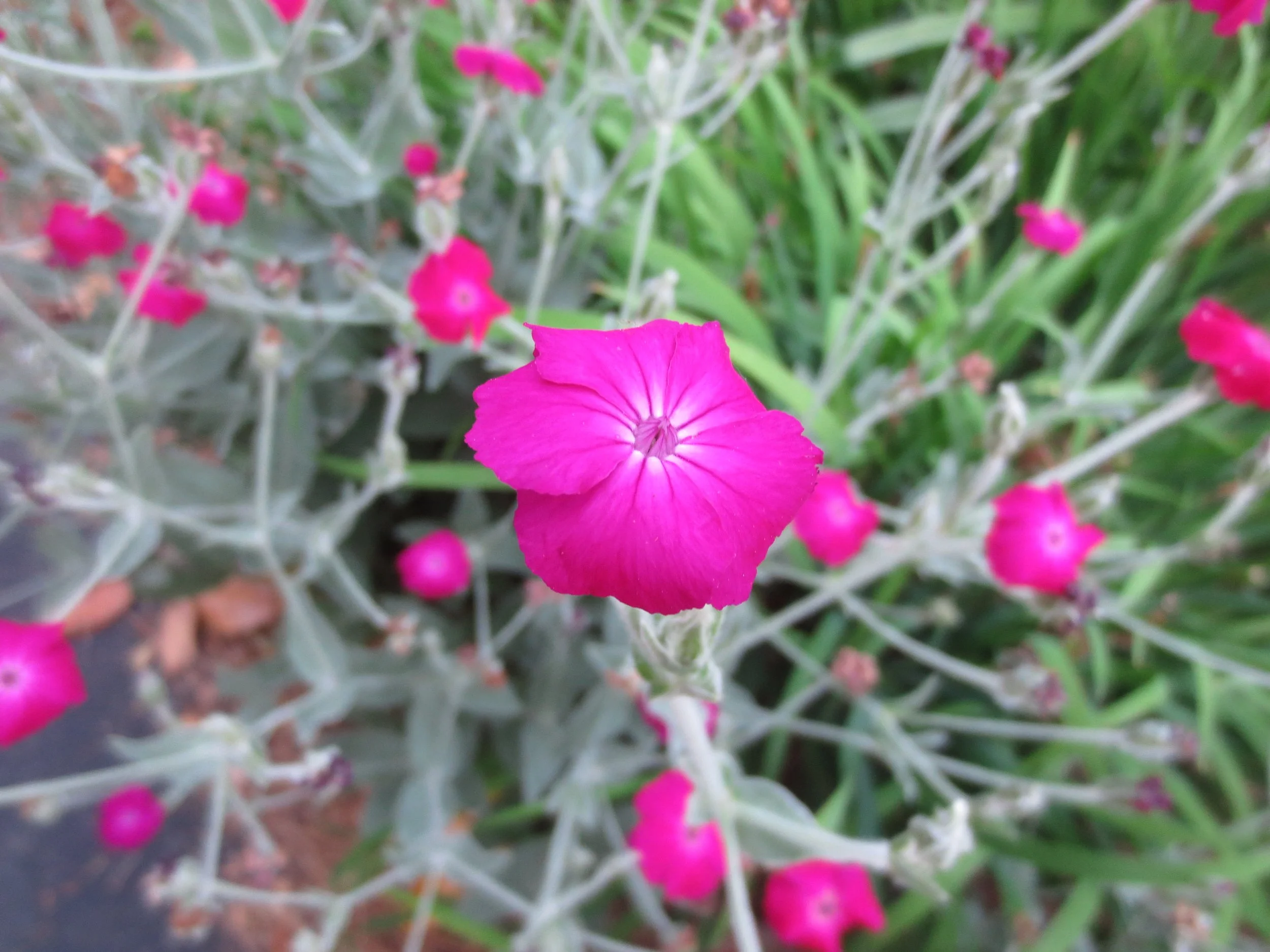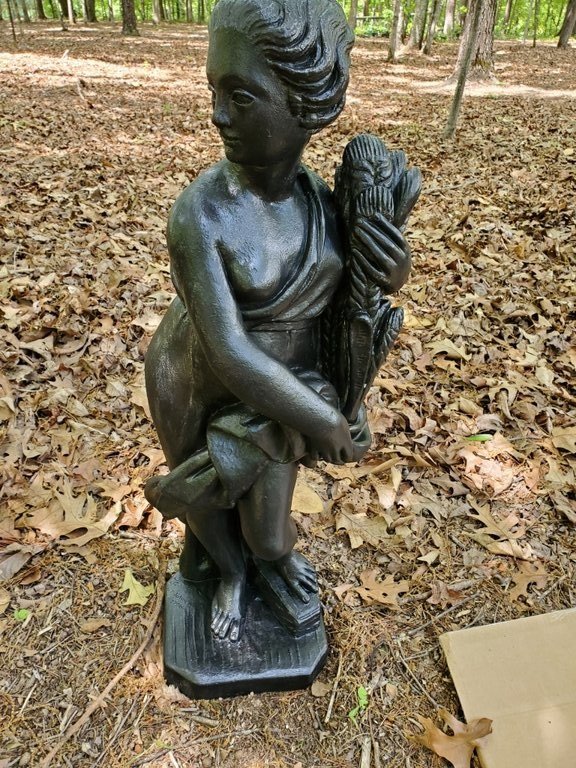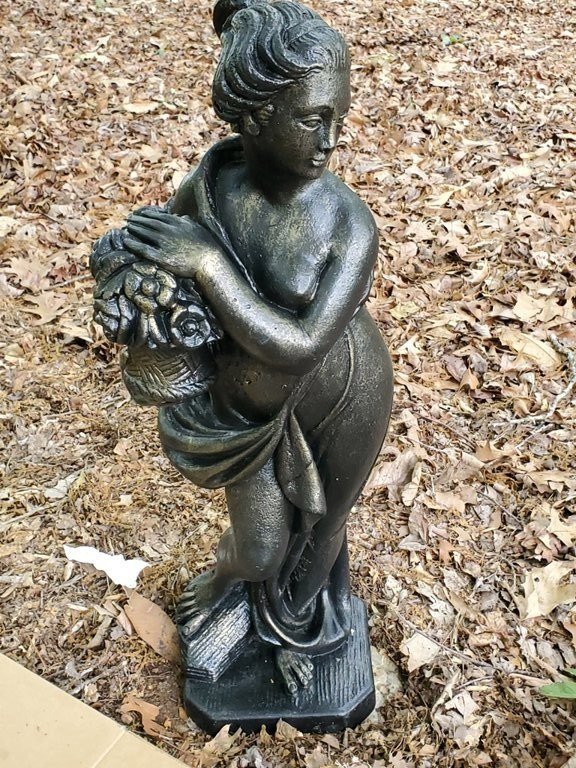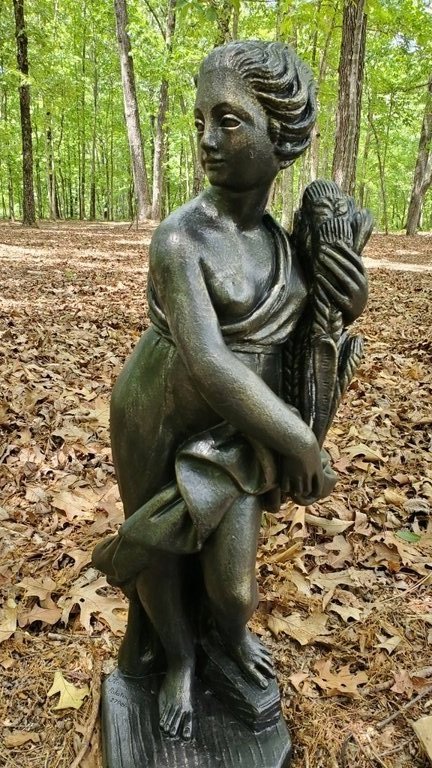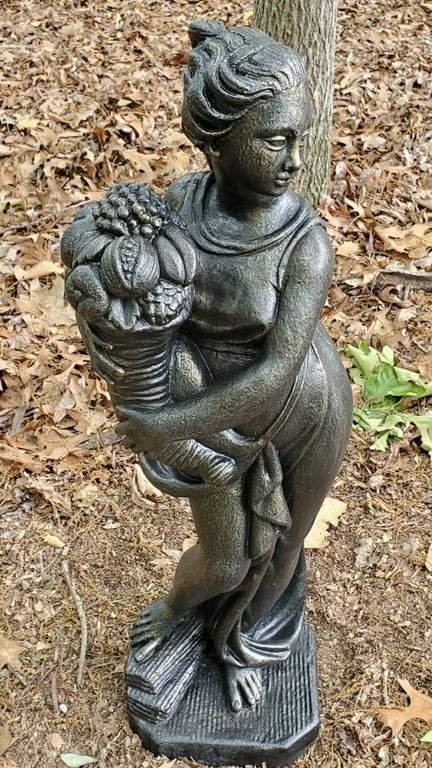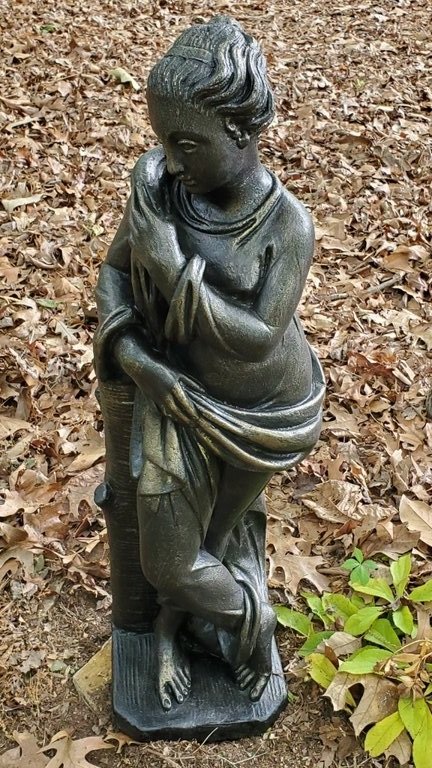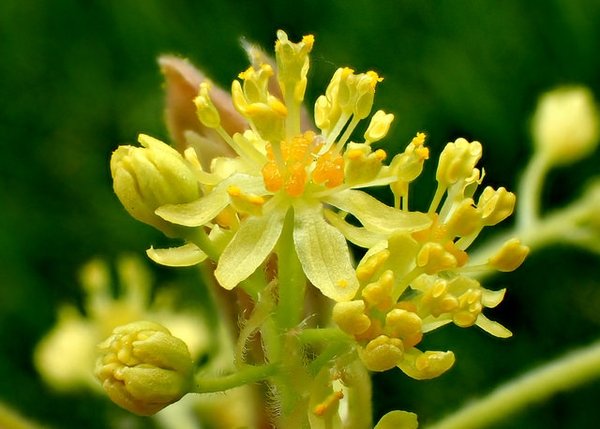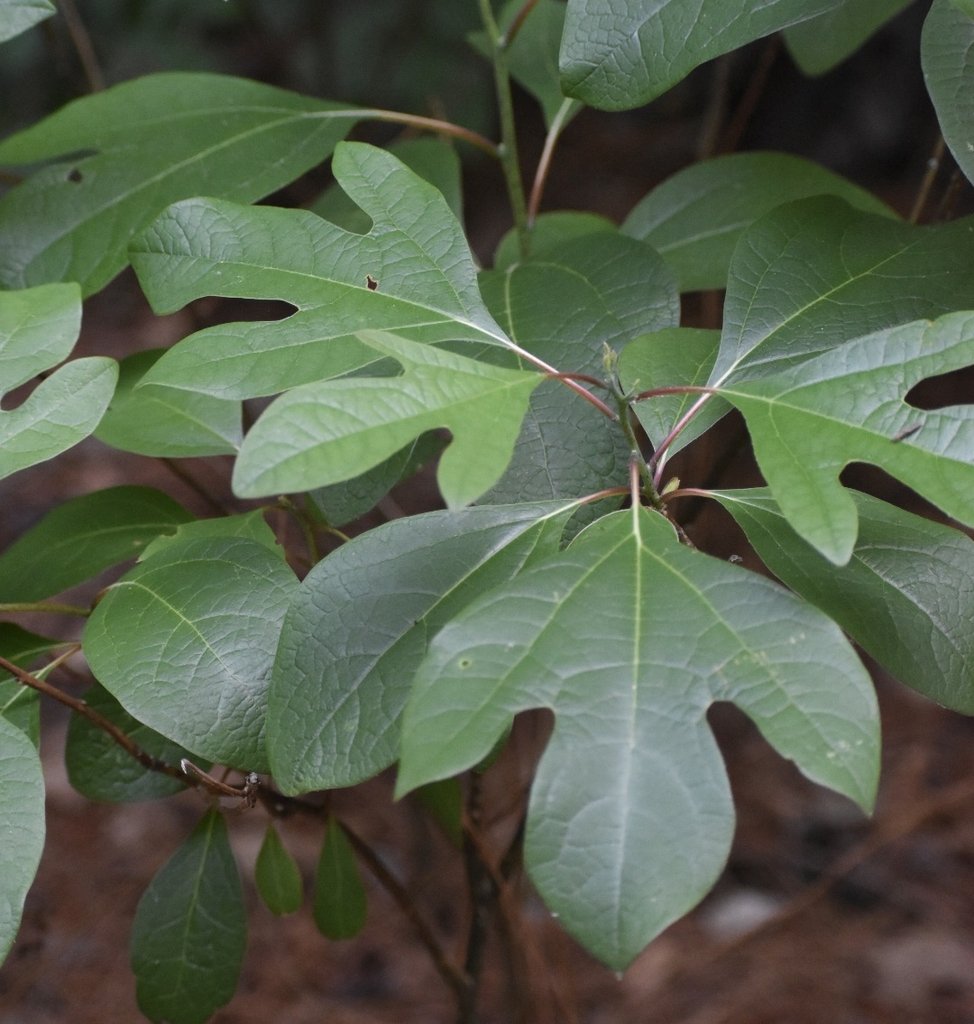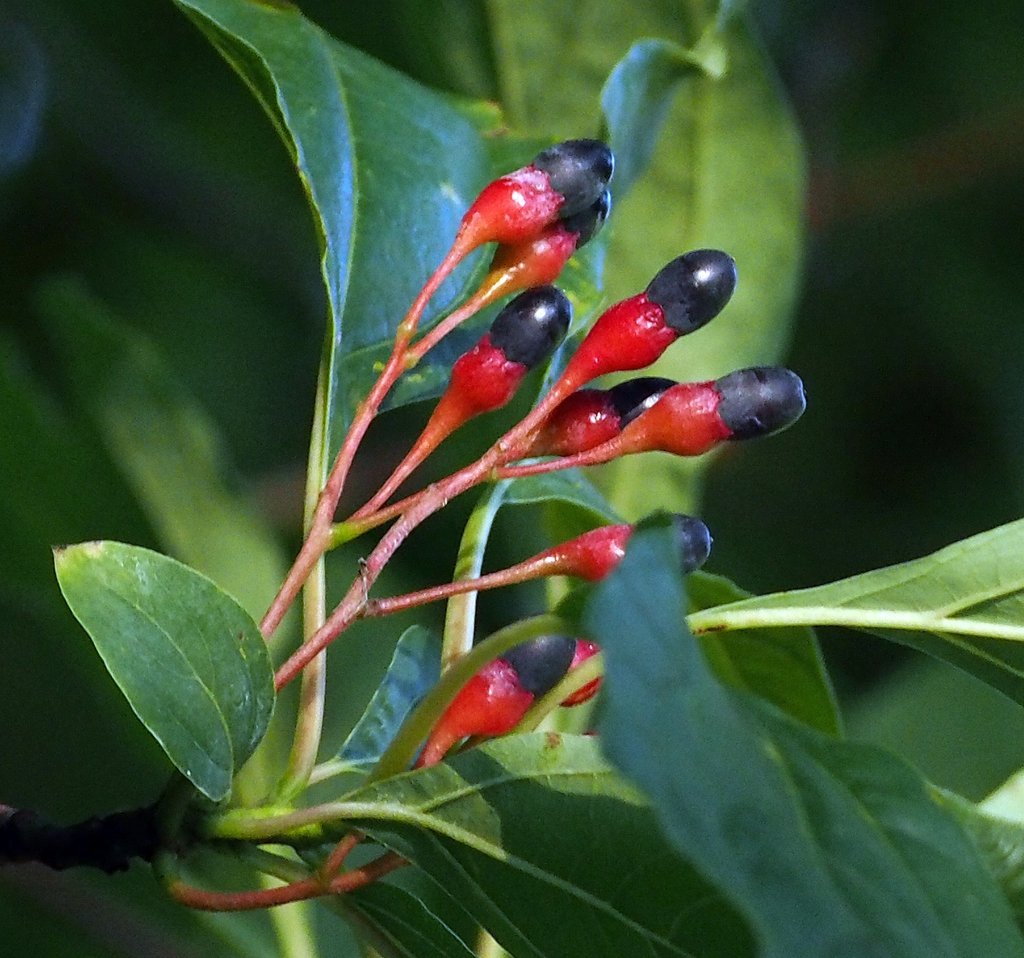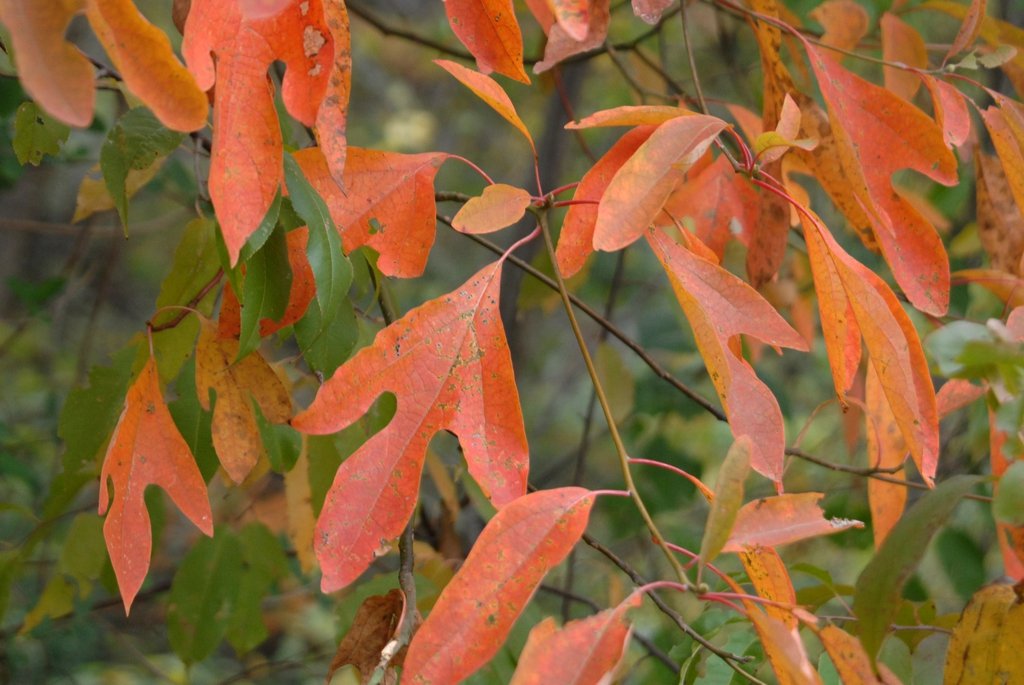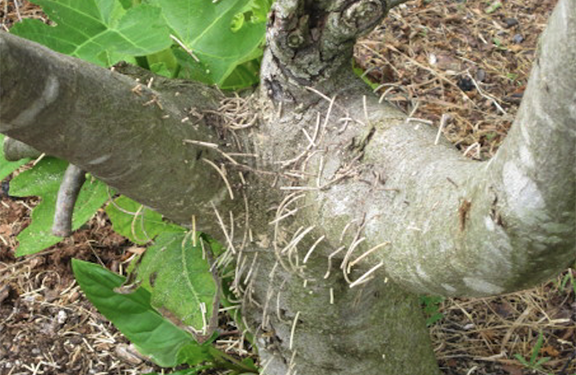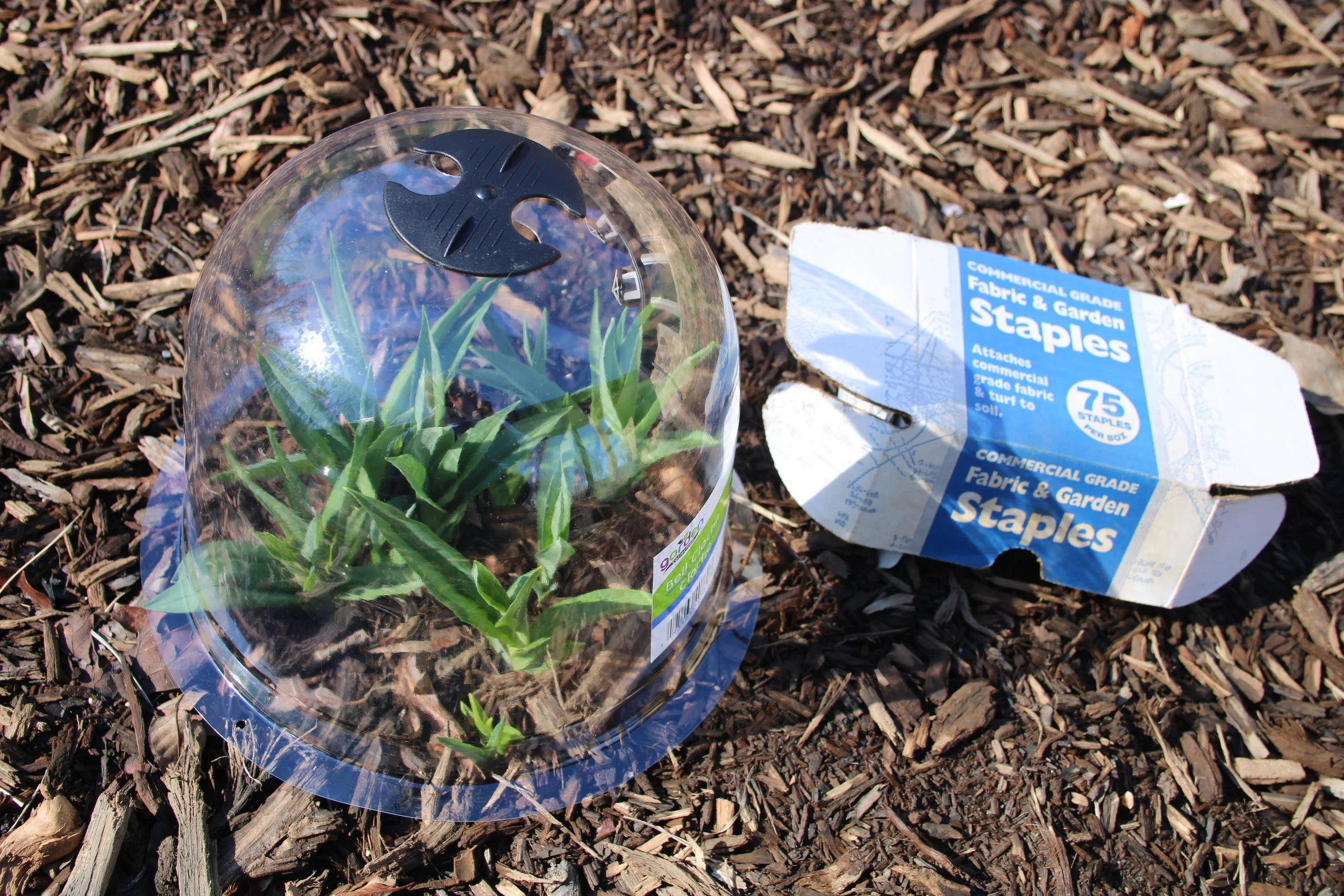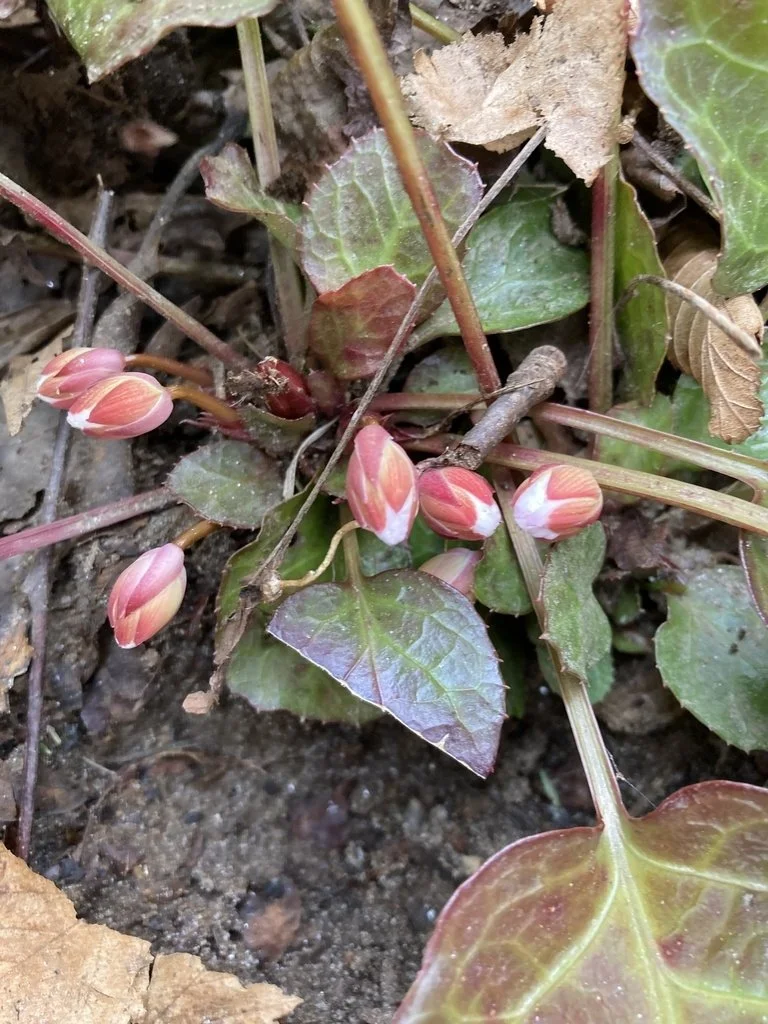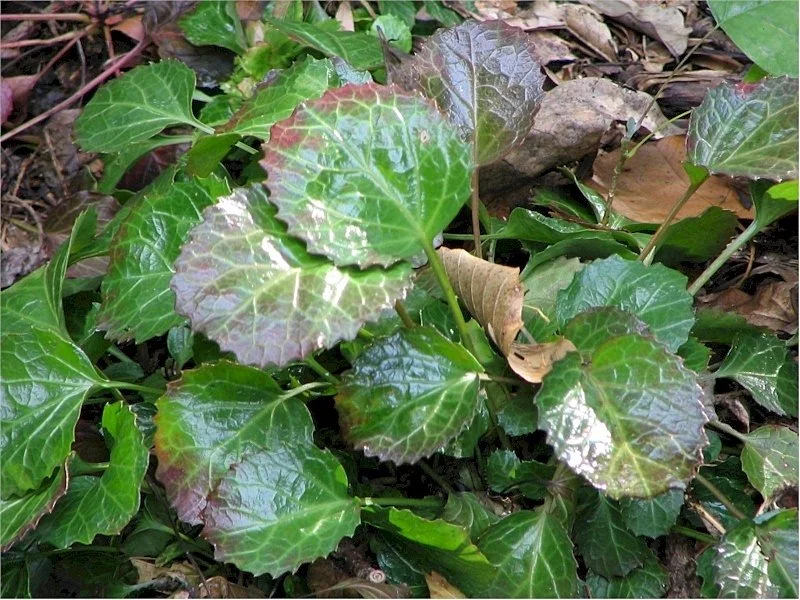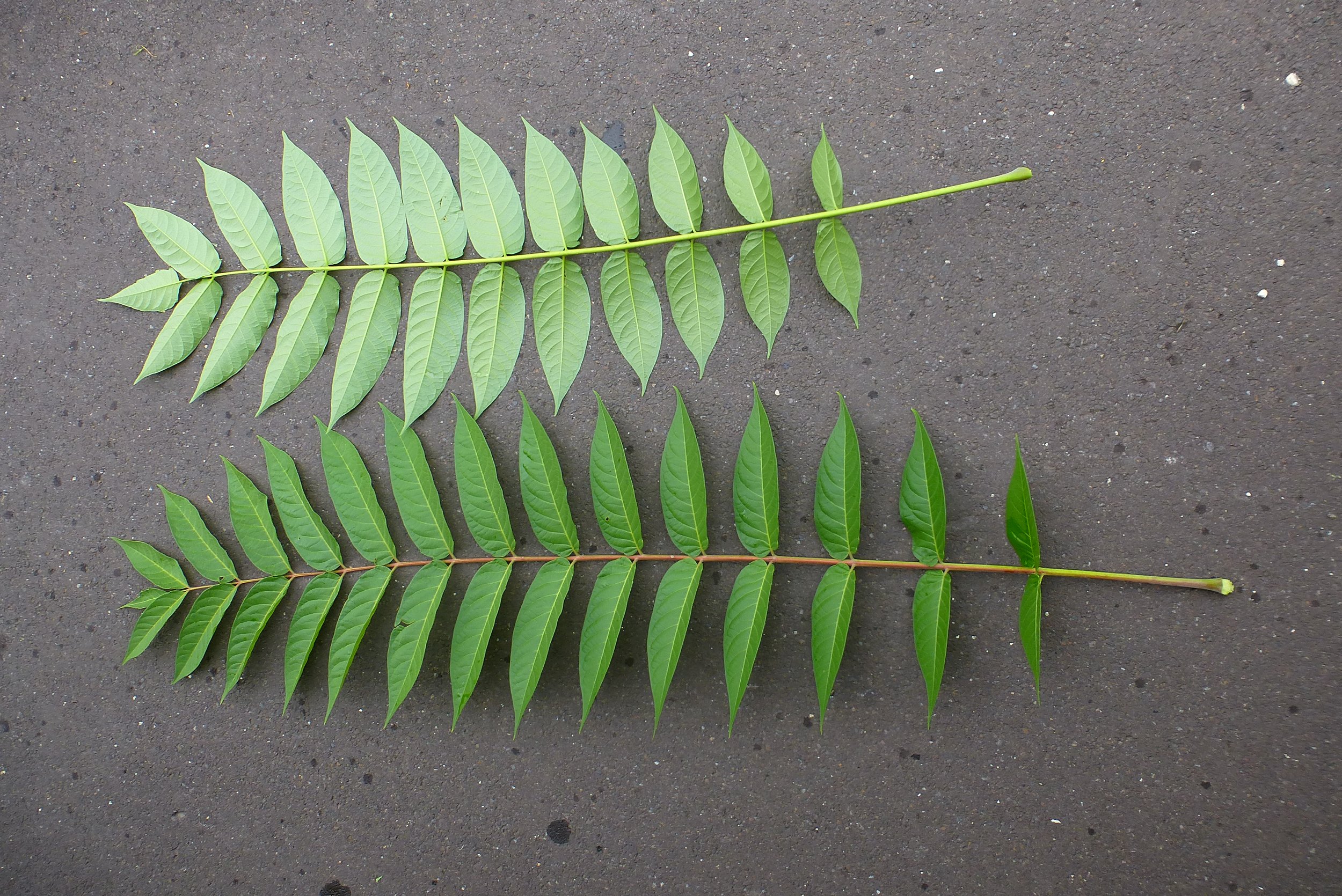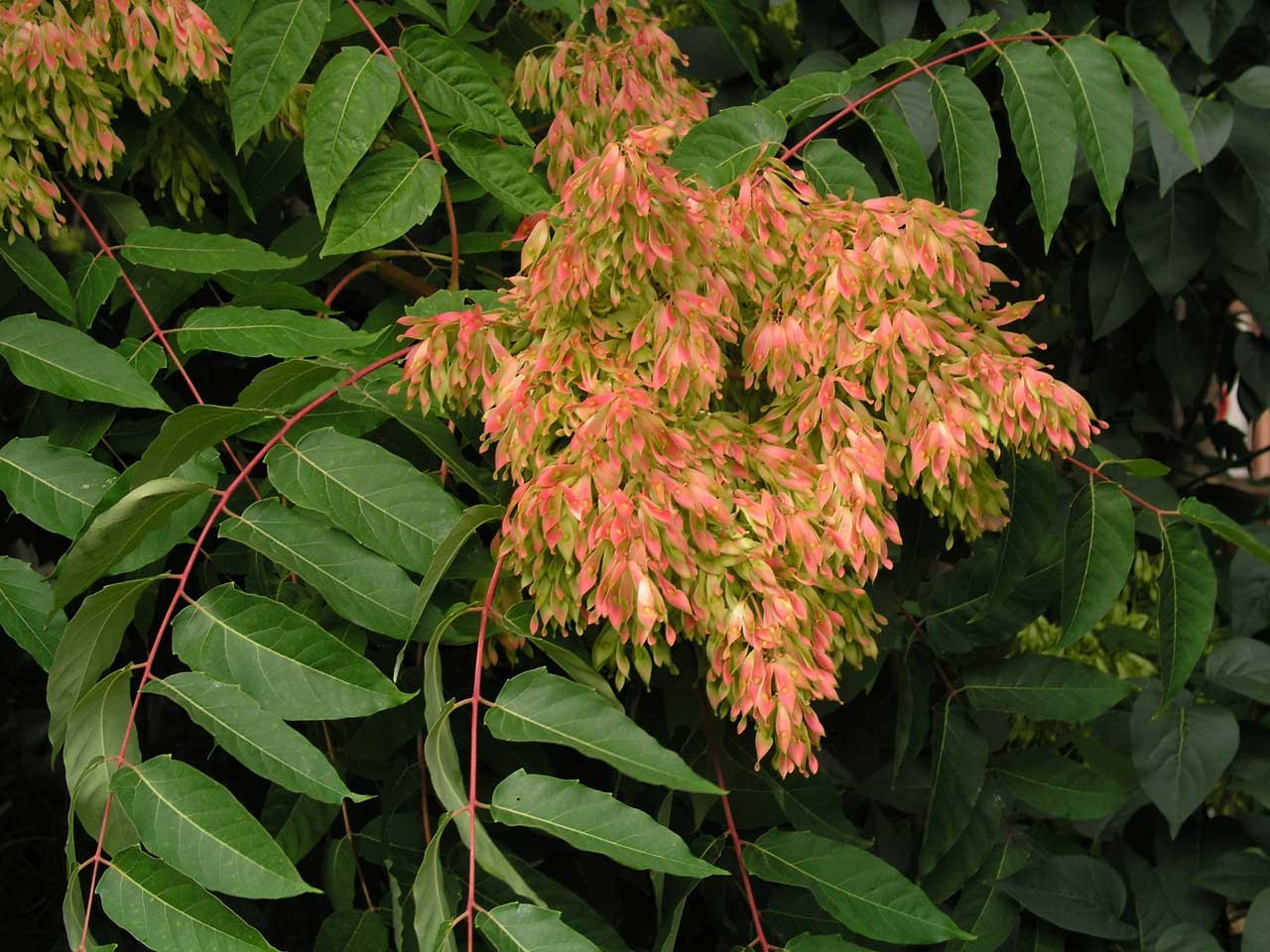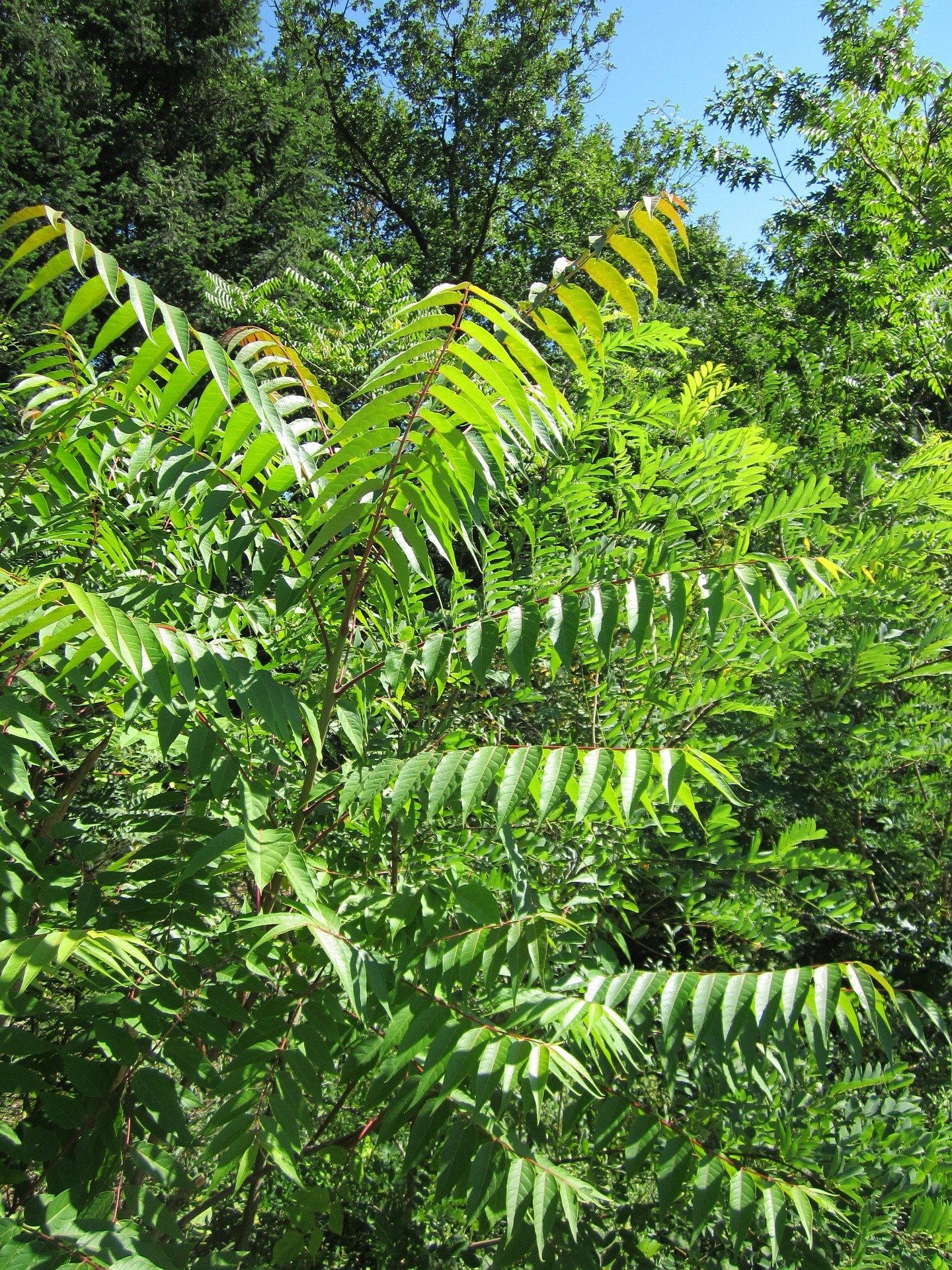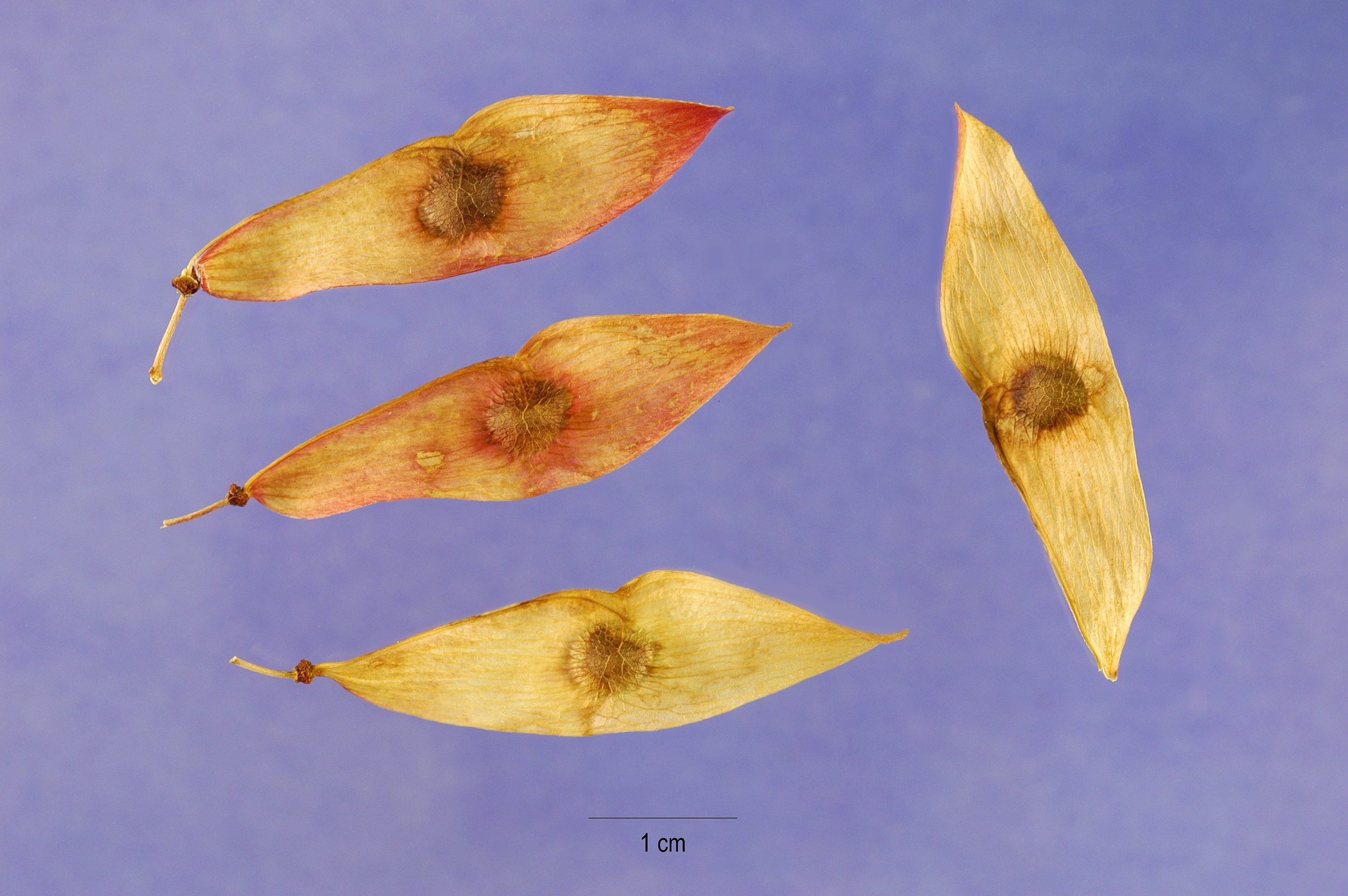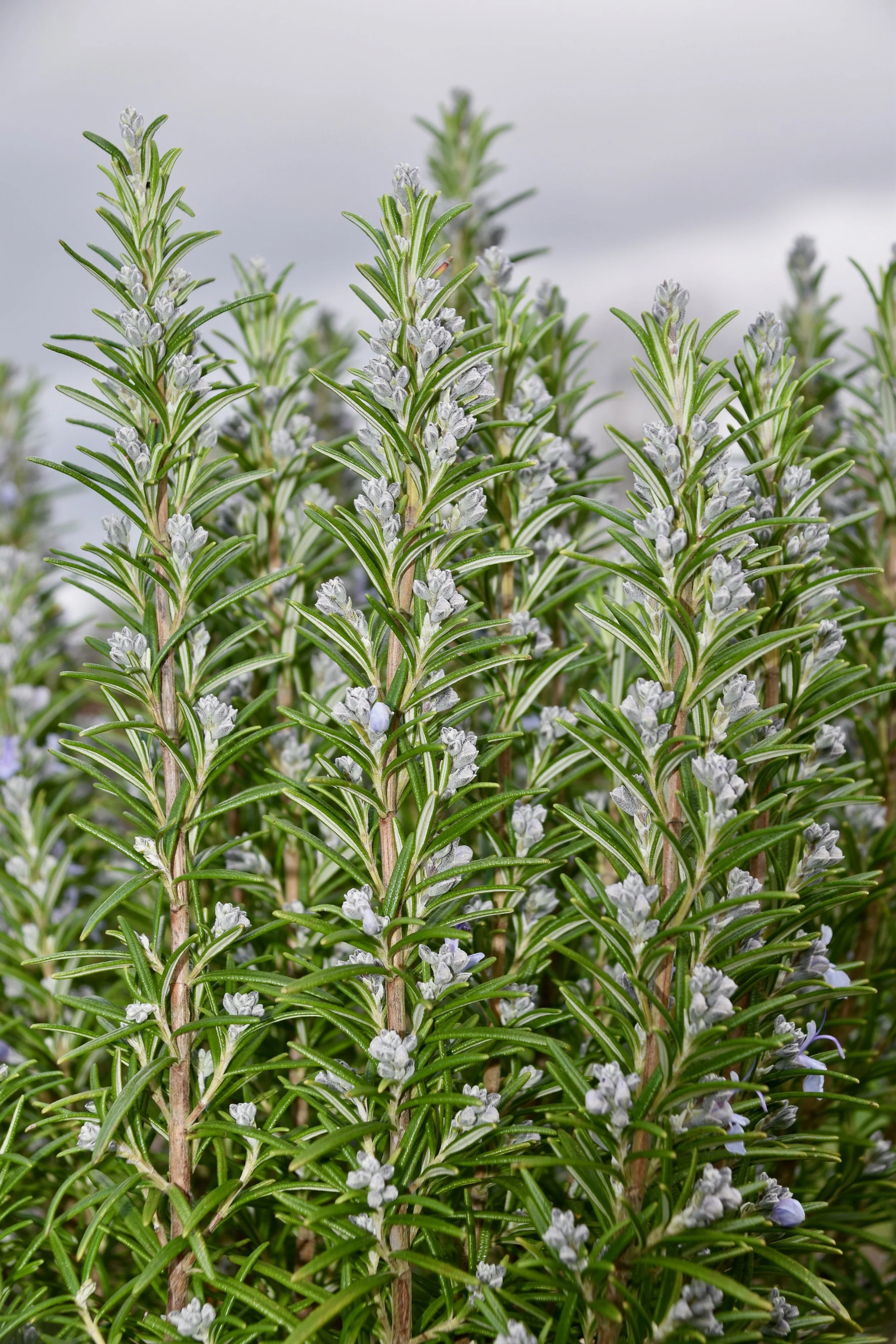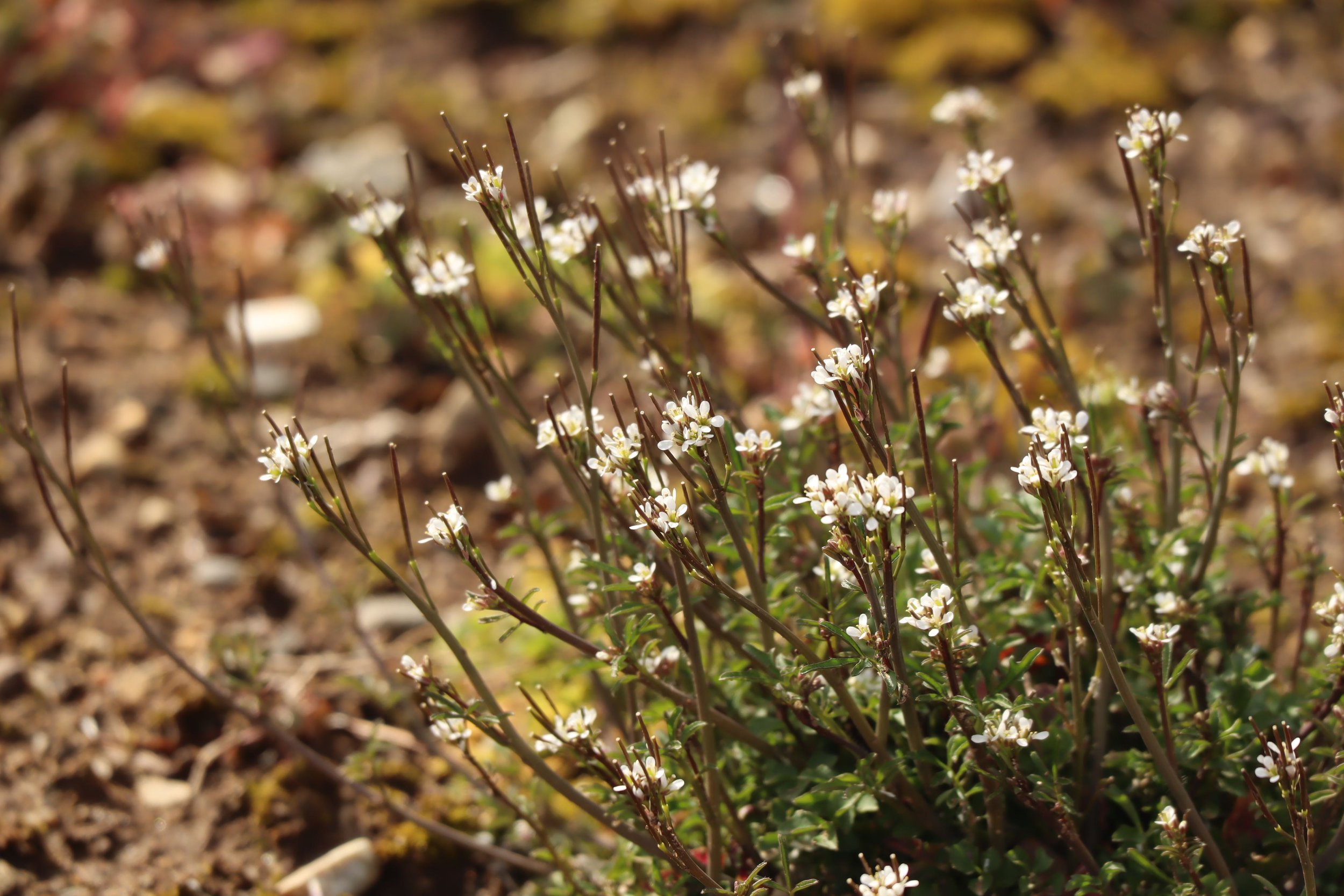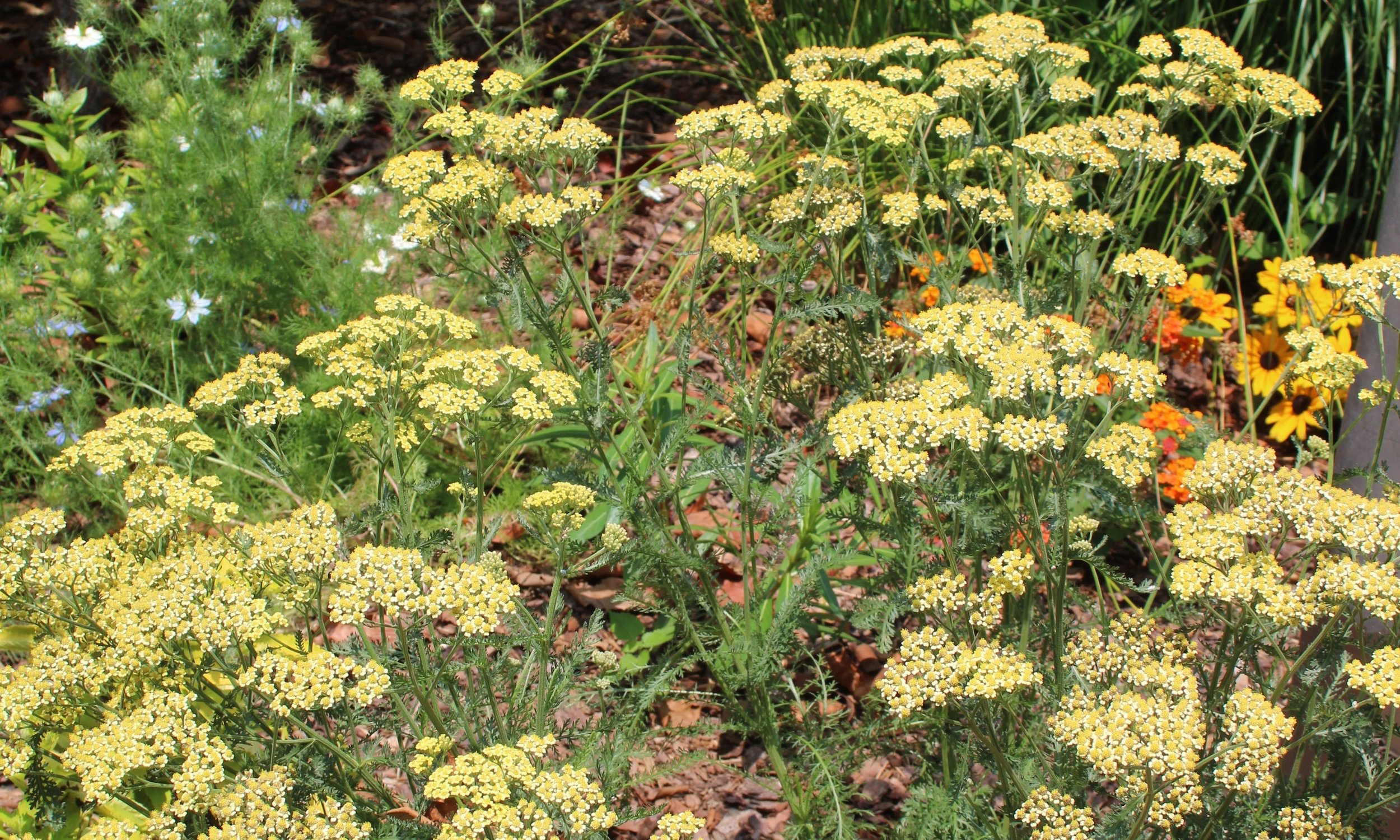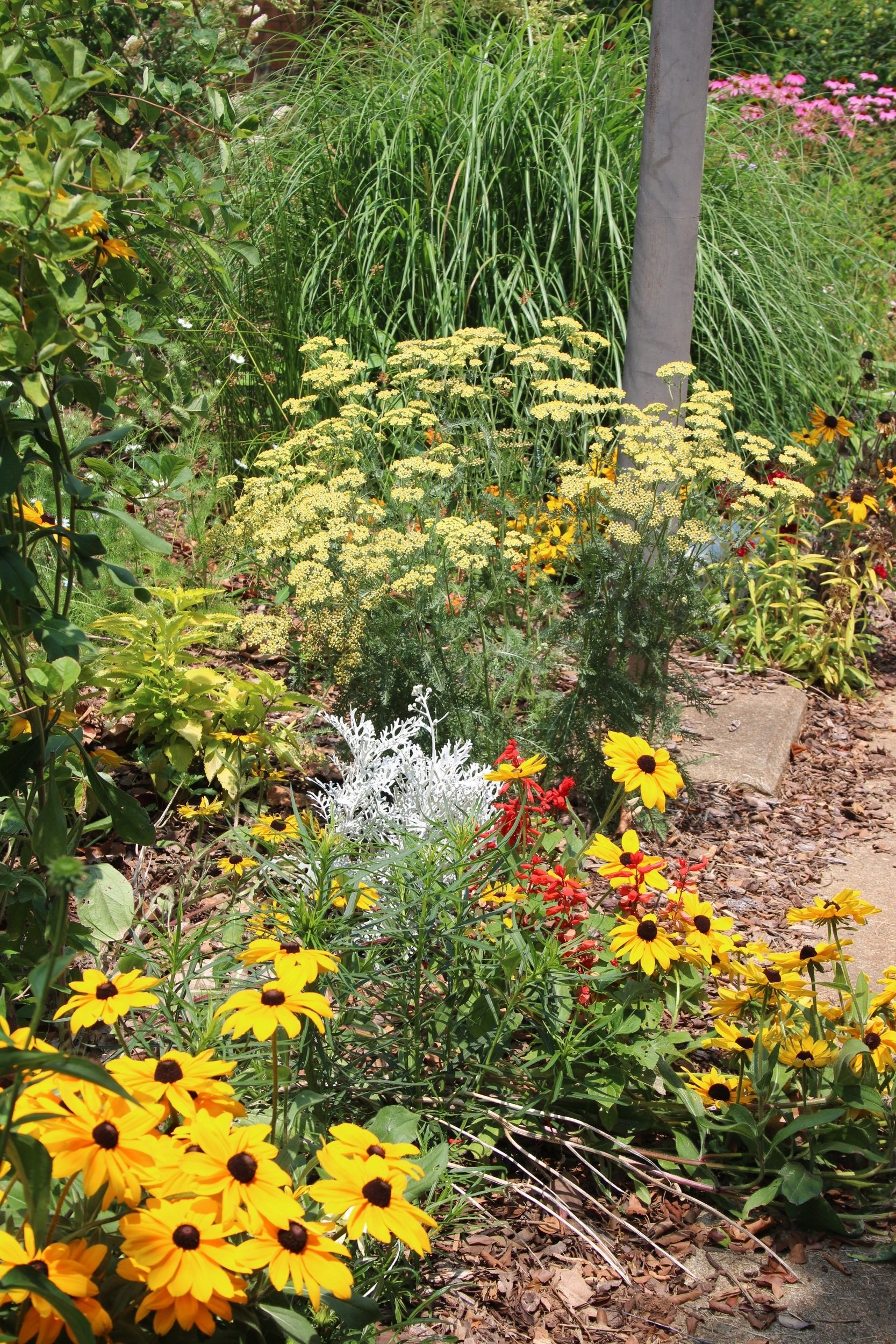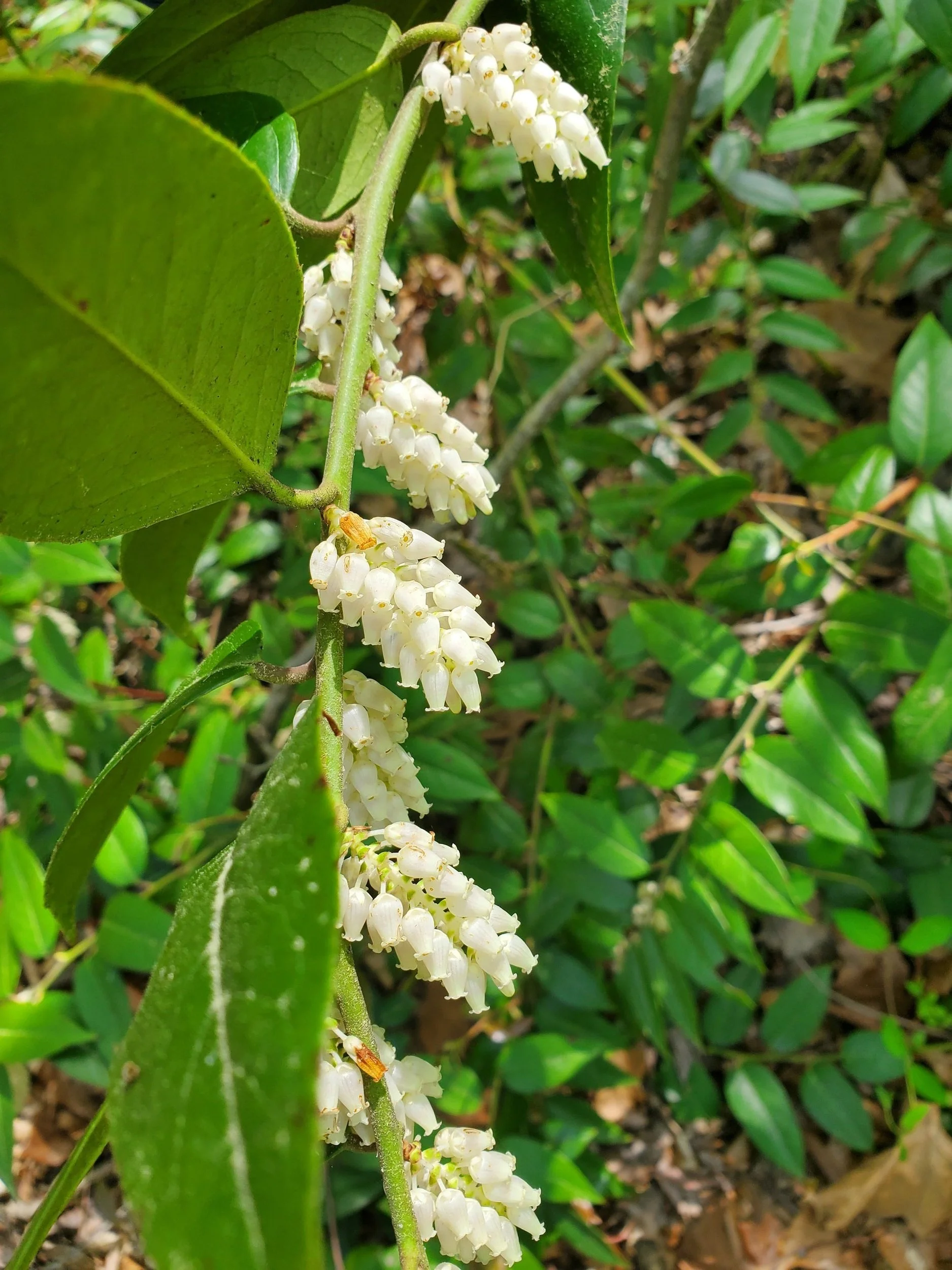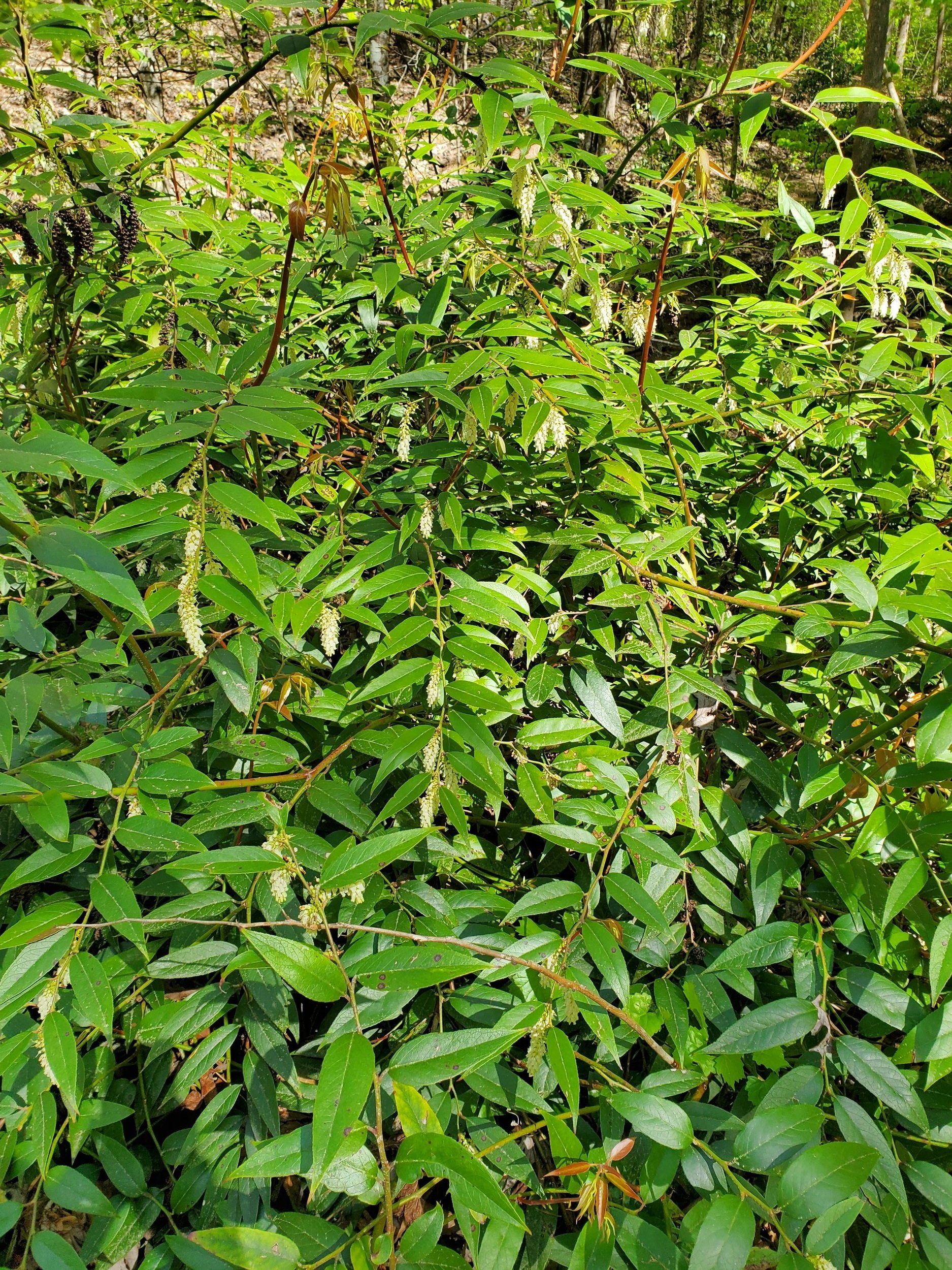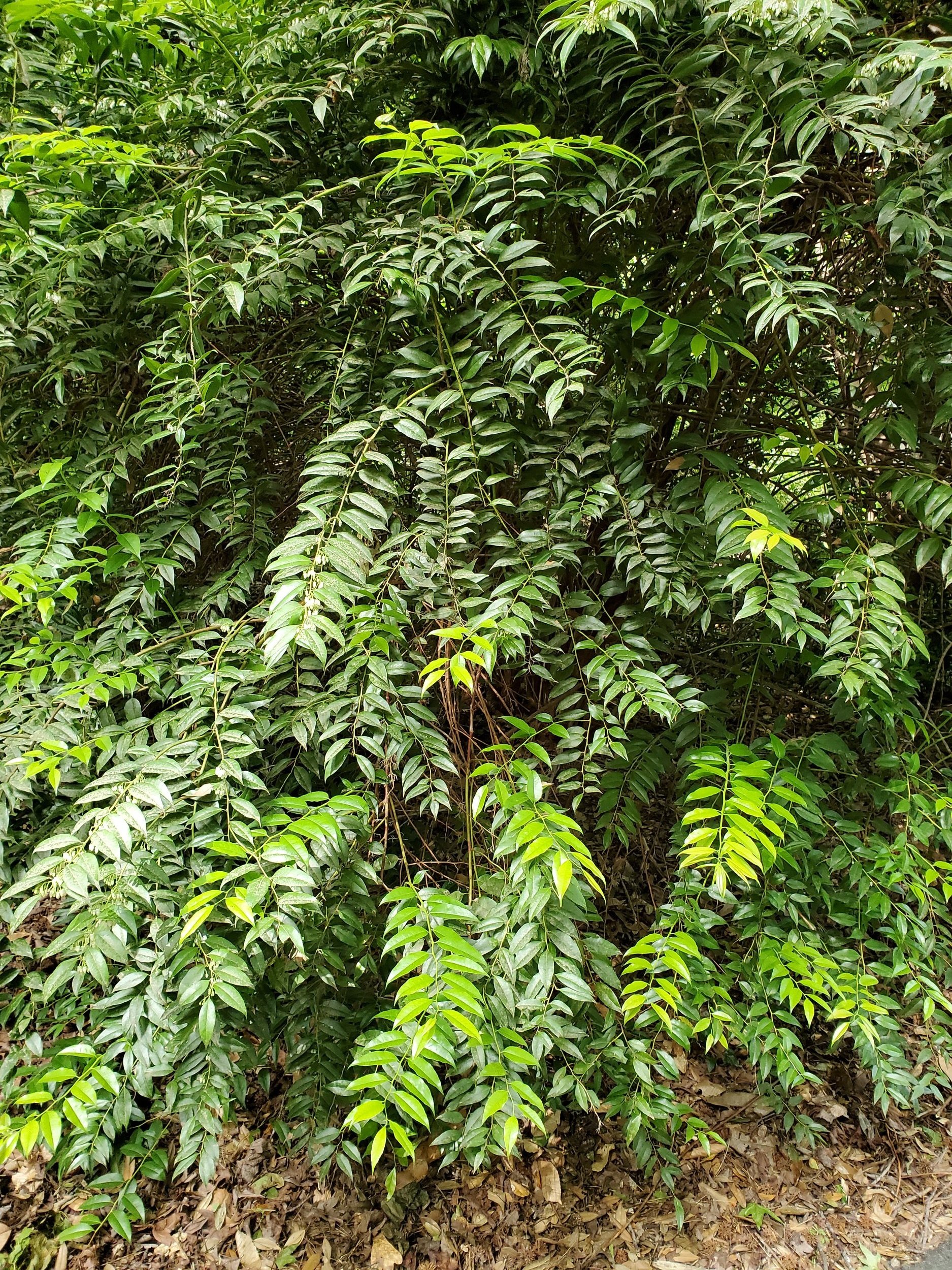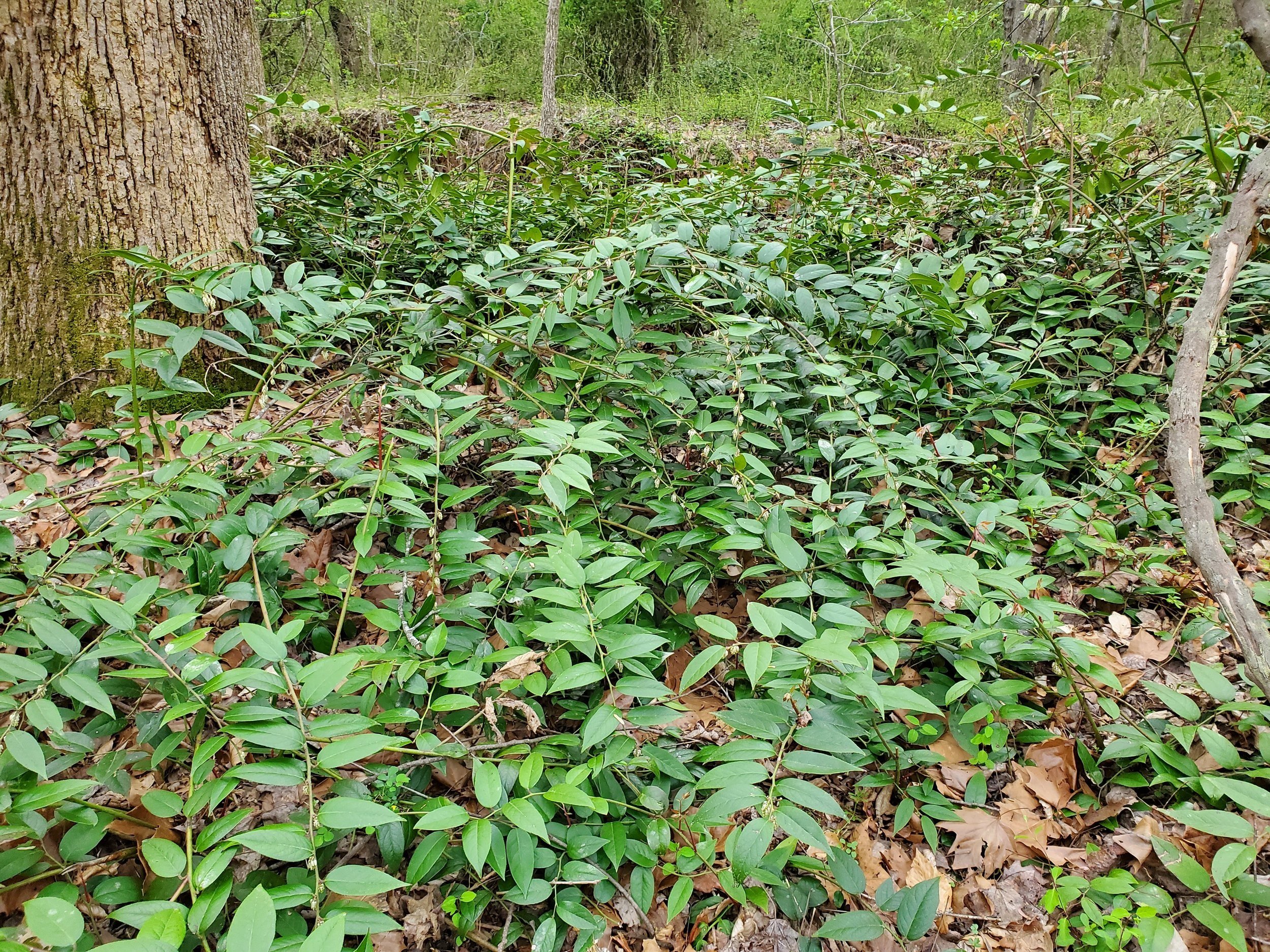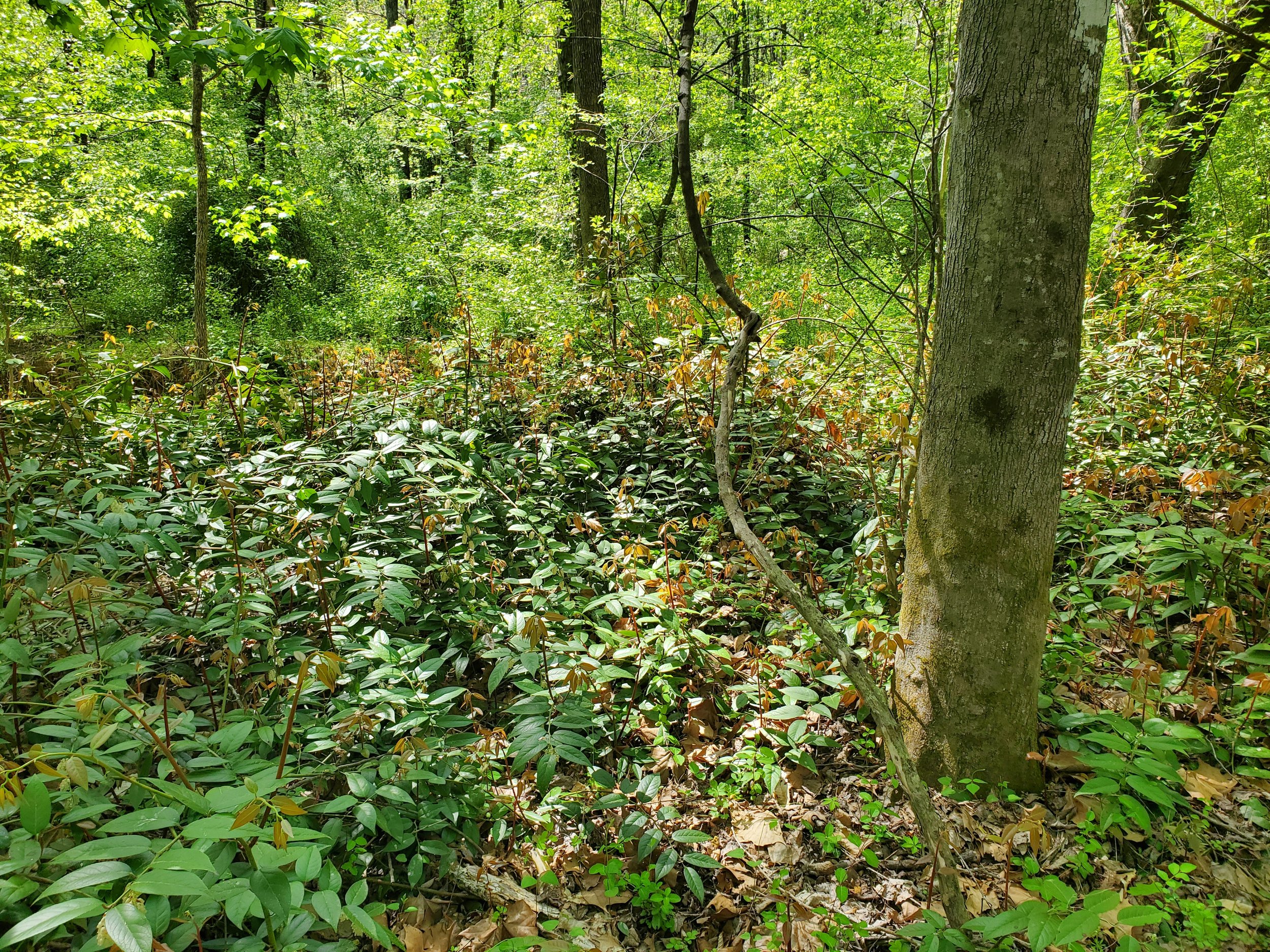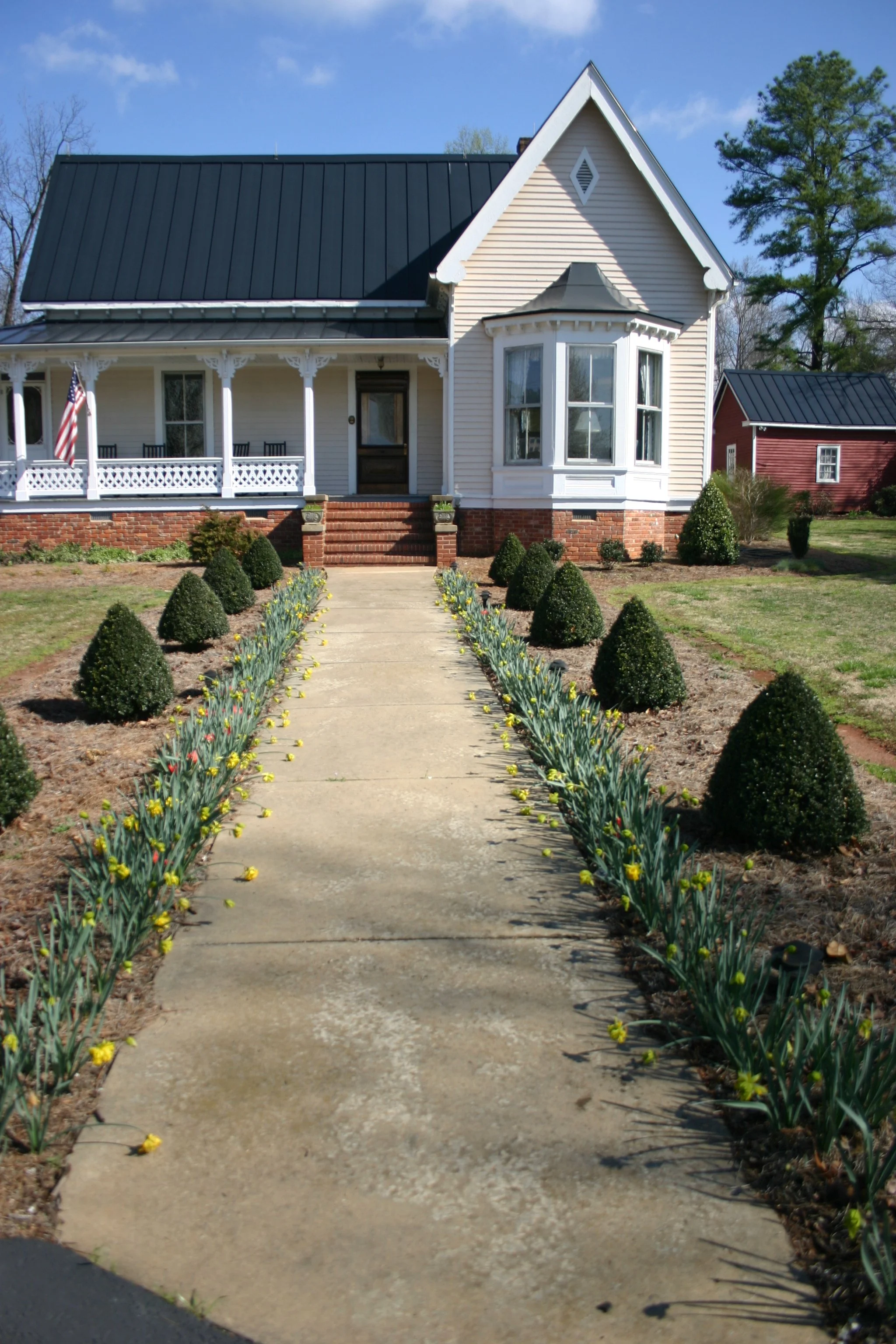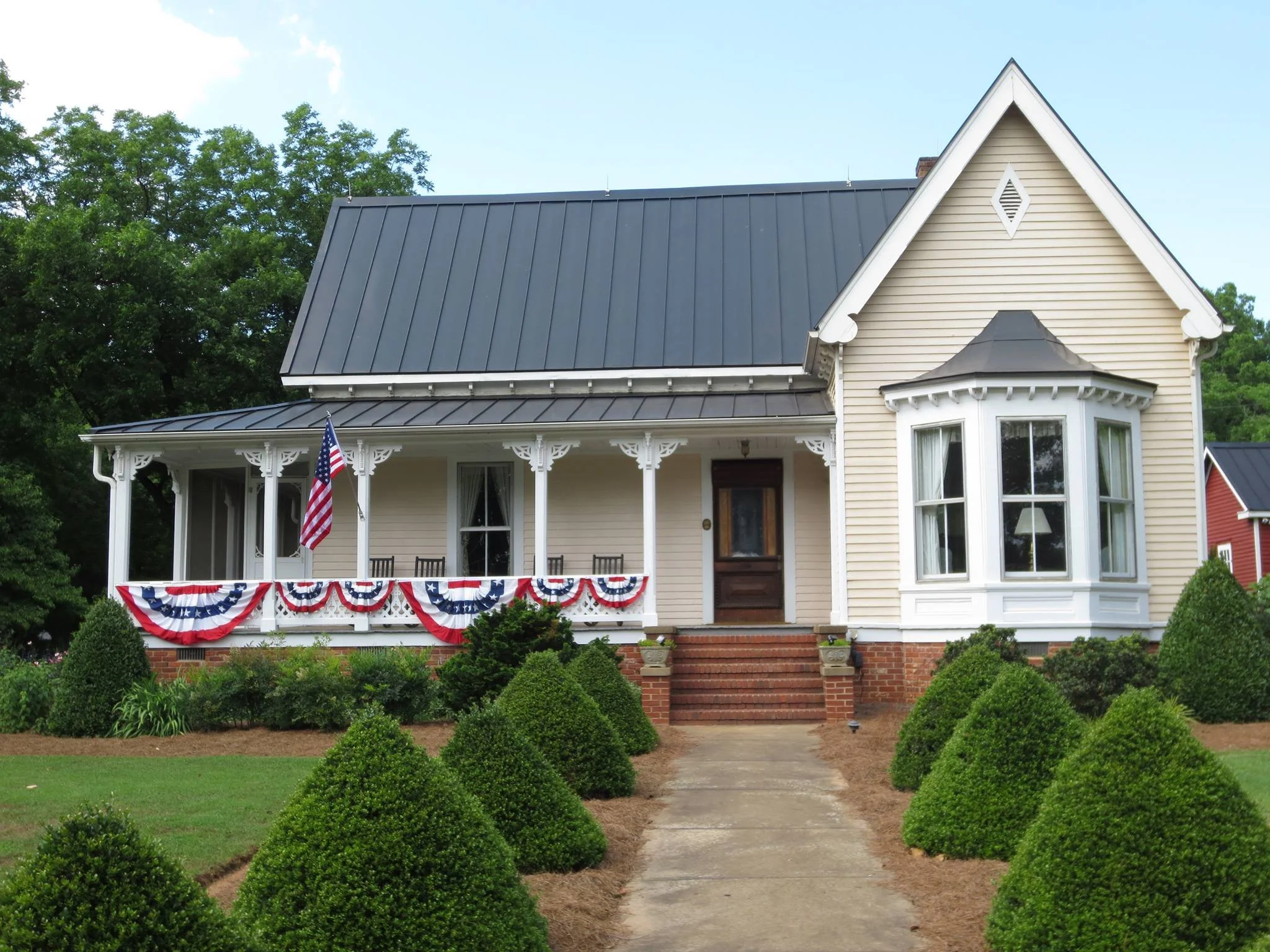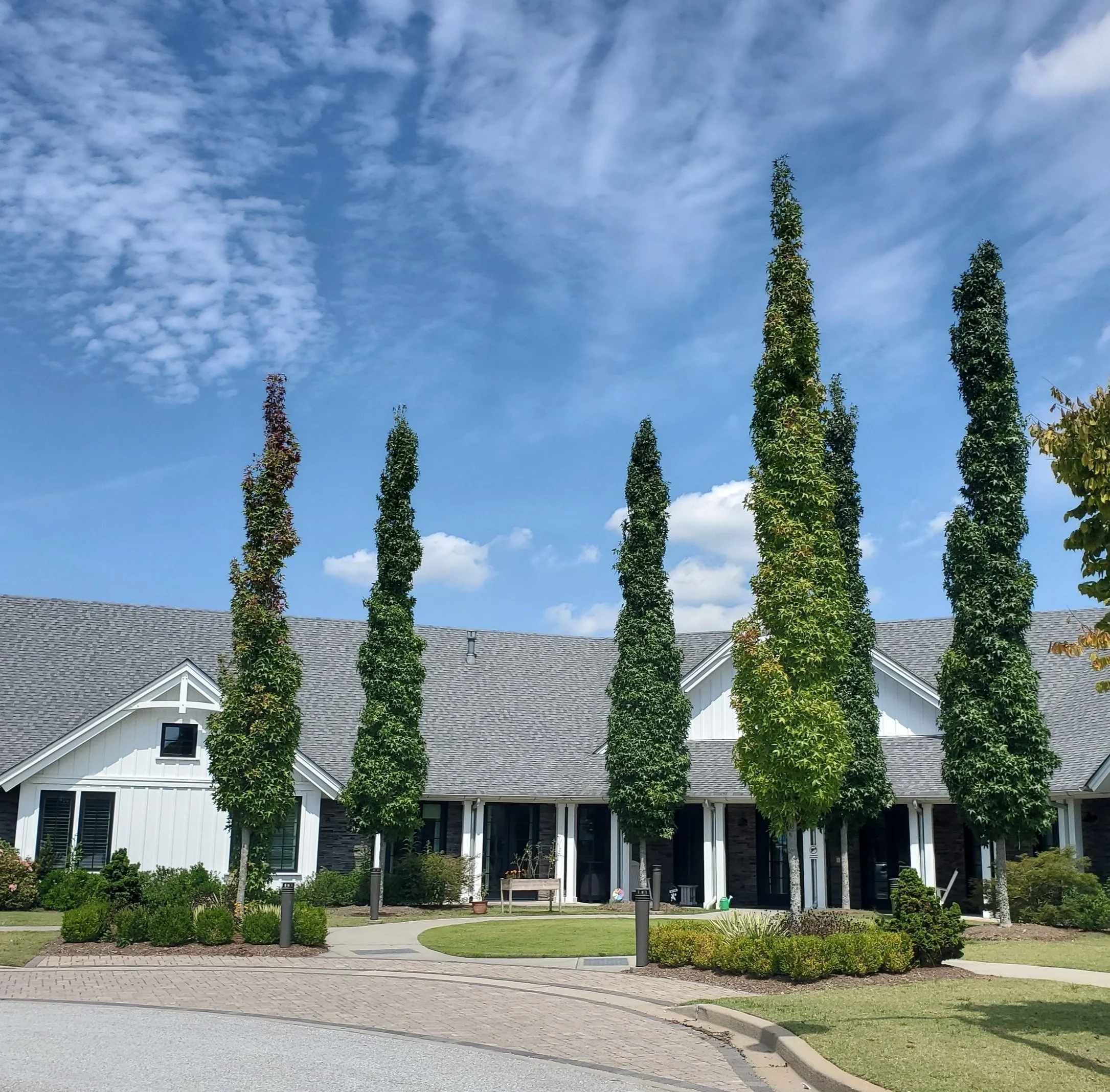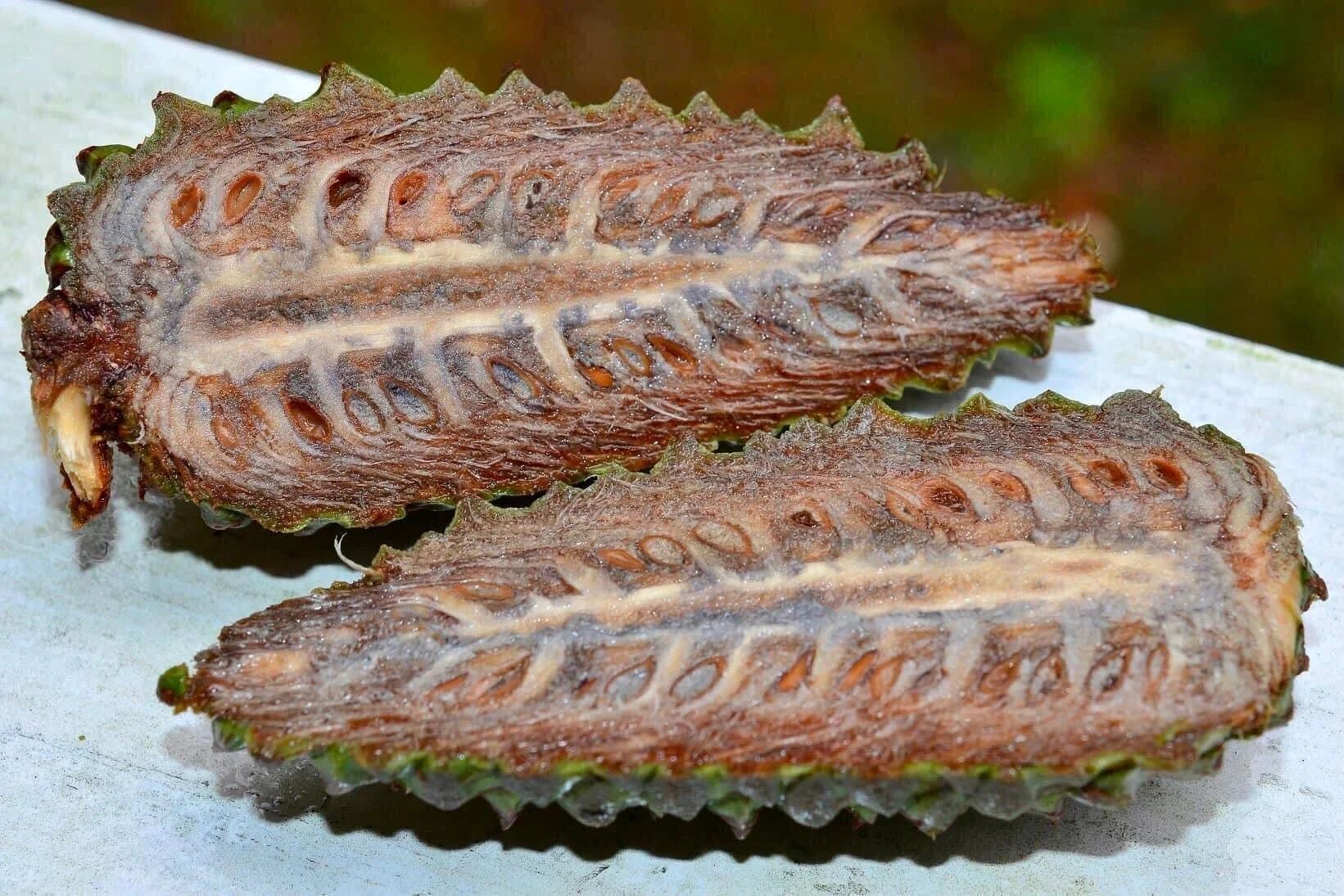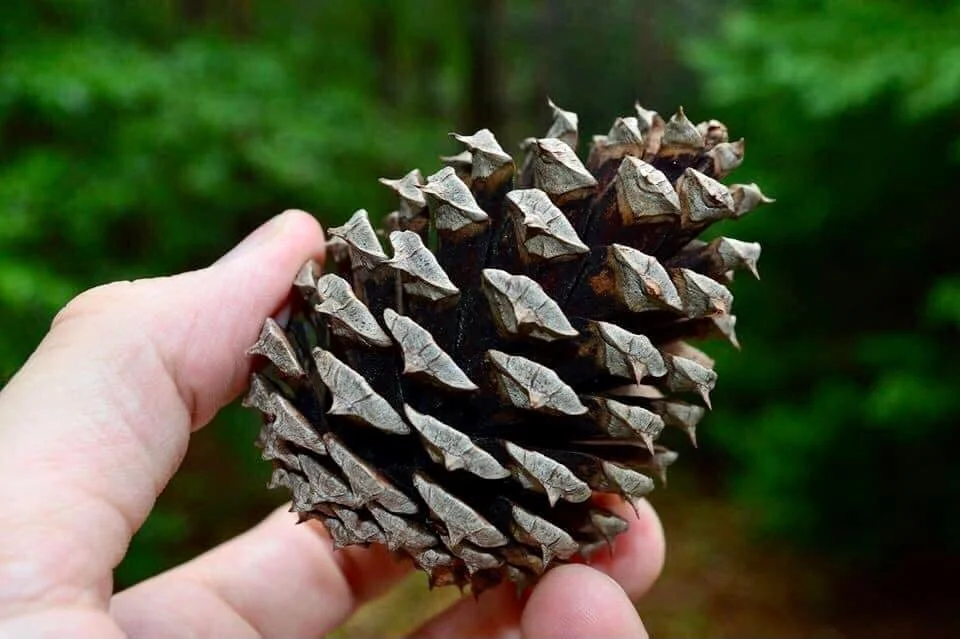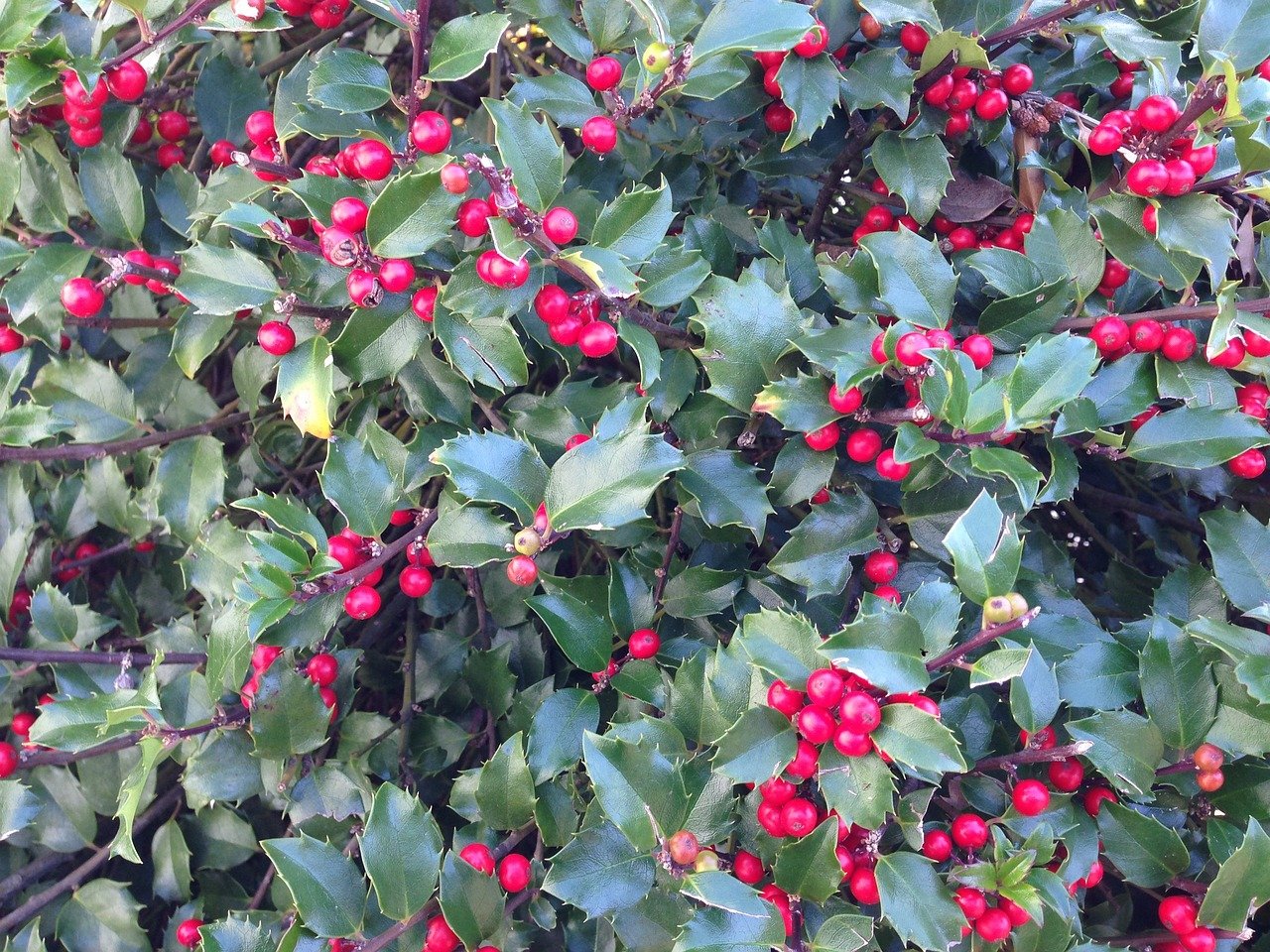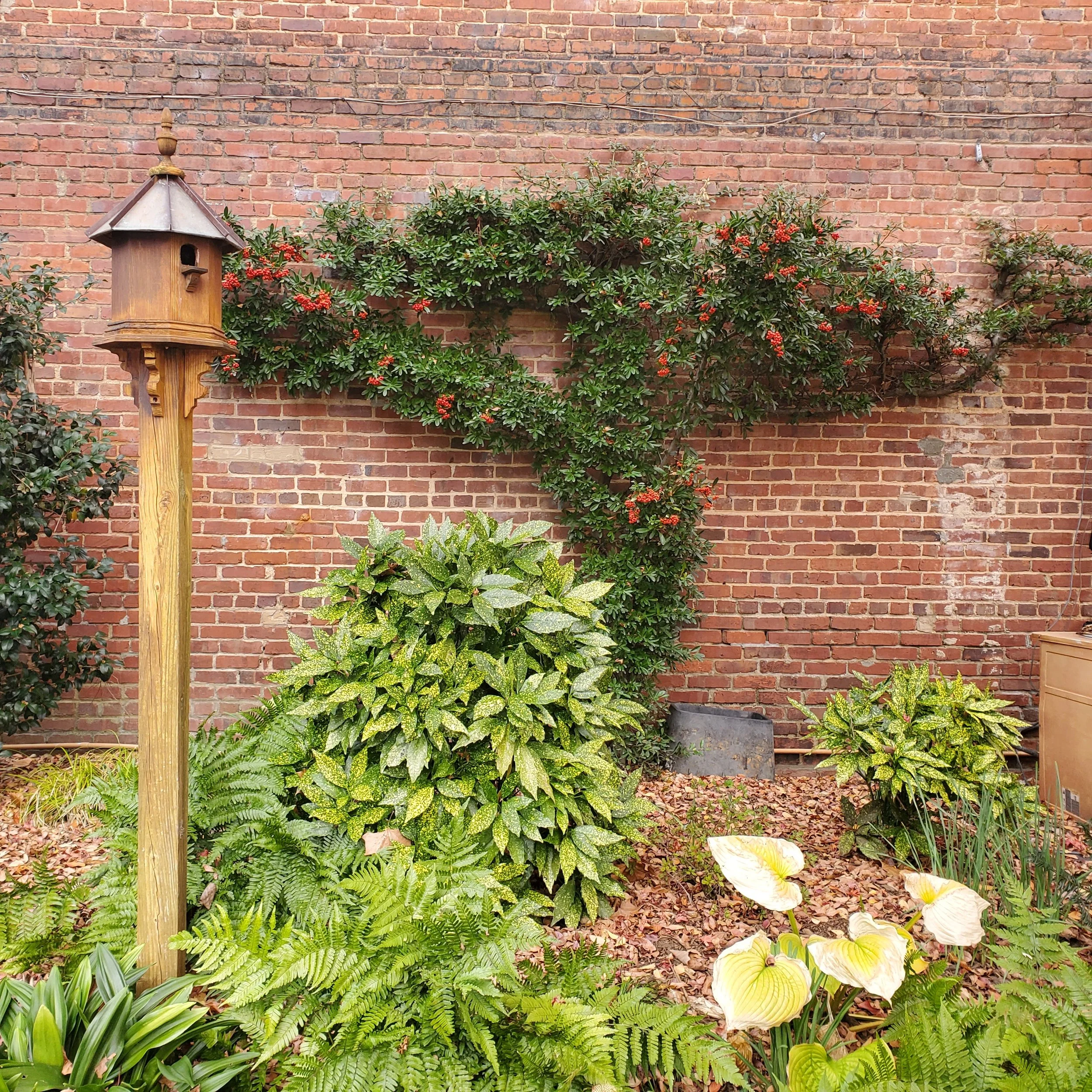While weeding in a community garden last week, I encountered a plant I had written about several years ago, Blue-Eyed Grass. I have not grown it in my home garden. One of its common names is Bermuda Blue-Eyed Grass. After battling common Bermuda (aka wiregrass) in my lawn and flower beds, I was not about to introduce any plant that shared the name or other characteristics. I’ve been keeping a watchful eye on the specimens in the community garden for two years now, and they appear to be well-mannered. While diminutive in size, their impact is powerful. It’s time to reconsider my initial wariness.
Blue-Eyed Grass is Sisyrinchium angustifolium, pronounced sis-ee-RINK-ee-um an-gus-tee-FOH-lee-um. The species name has changed several times, but the genus Sisyrinchium remains consistent. Blue-Eyed Grass is a semi-evergreen, clump-forming native found across most of the eastern half of the country, in zones 4-9. Plants are undemanding. They grow in any texture soil and partial shade to full sun, preferring a consistently moist soil and average fertility. Rich soil or too much fertilizer results in lush leaf growth and few flowers. Keep mulch away from the base of the plant to avoid root rot.
They can be used singly as a specimen or as an edging. When flowering is complete, trim the spent heads to prevent unwanted spread. Blue-Eyed Grass looks at home in rock gardens, cottage gardens, woodland gardens, and sloped gardens. Bees and butterflies love their pollen and nectar, so they work well in pollinator gardens as well.
Mature clumps of Blue-Eyed Grass can reach up to 16 inches, although 12 inches is more common. The blue flowers appear in spring and summer, and are held above the foliage. Like other members of the Iris family, clumps should be divided every year or two to keep them looking healthy. The cultivar ‘Lucerne’ has larger flowers than unnamed varieties.
Sisyrinchium angustifolium, Blue-Eyed Grass, used as a specimen in a community pocket park.
